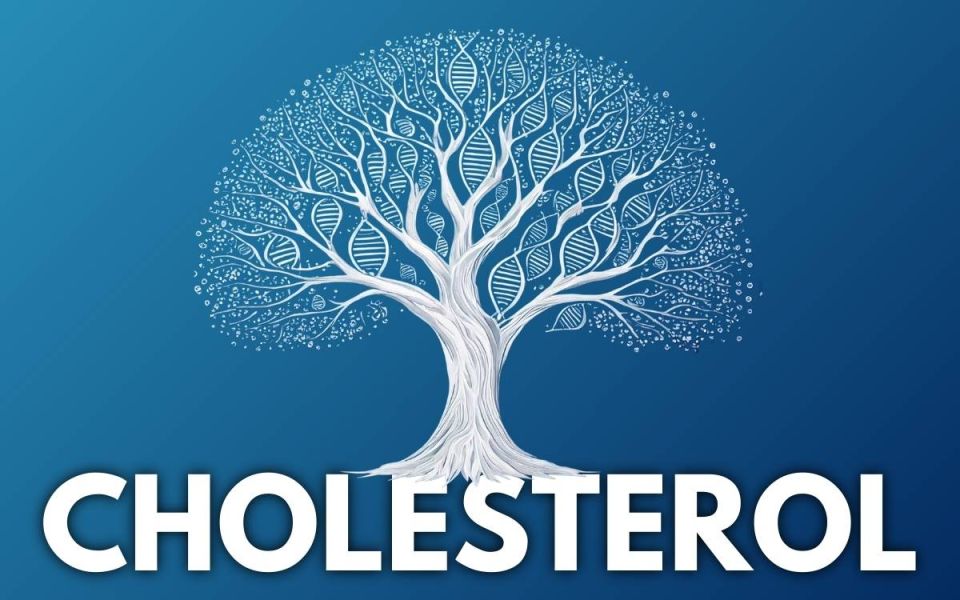Lipoprotein (a): The Cholesterol You Inherit, Not Eat

With Thanksgiving coming up, it’s a good time to reflect on family. Family means home, memories, dreadful political discussions, and genetics. Family genetics can make a big difference in our lives, being the primary determinant of things like eye color, chance of being bald (thanks, Grandpa), and… cholesterol levels? In this article, we’ll explore what genetics are and how they work, dive into a genetically determined type of cholesterol called lipoprotein (a), and look into how you can check your cholesterol for free at home.
Genetics is the study of how parents pass genes to their children and how these genes affect our lives and our health. Genes are the basic units of DNA that code for specific traits inherited from parents. Some genes influence eye color, others determine height, and a different group controls blood type. Altogether, the genes we inherit from our parents come together to make our body what it is. We have around a 50% chance of inheriting a particular gene from either parent, which is fun until you remember that some disorders are genetic.
Most genes code for proteins, the building blocks of the body. Proteins make up everything from muscles to hormones and come in a wide variety of shapes and sizes. In genetic disorders, genes code for proteins that don’t work properly. Genetic disorders come in two major varieties: recessive or dominant. In recessive disorders, having one “good” copy of a gene is enough to produce the necessary protein and ward off disease. These have a lower likelihood of being inherited because a mutated "bad" copy of the gene is required from both parents. In contrast, with dominant disorders, having just one mutated "bad" copy is sufficient to cause issues. These have a much higher chance of being inherited because only one “bad” copy of the gene from a single parent is needed. One example of a dominant genetic disorder is elevated lipoprotein (a) cholesterol.
Cholesterol is needed in cells and around the body, but to travel through the bloodstream it must be packaged into a lipoprotein. This lipoprotein package is a group of proteins and fats, including cholesterol, that can move through the bloodstream safely (sometimes) to be delivered to cells. Lipoprotein (a), pronounced “lipoprotein little-a” and written Lp(a), is a particularly dangerous type of lipoprotein. This really, really, really, really bad cholesterol is a triple threat associated with:
- Atherosclerosis, hardening of the arteries
- Thrombosis, blood clots in the bloodstream, brain, or heart
- Inflammation, stressing the body’s cells and damaging tissues
Together, these lead to premature heart attack and stroke. This is exacerbated by the fact that Lp(a) doesn’t break down in the same way as LDL, the other dangerous lipoprotein. Victoria Helow, MD, stated on the MedEvidence Podcast that “some lipoproteins just simply do not respond [to statins], such as lipoprotein-a.” Lp(a) levels are 70-90% genetically determined and remain unaffected by lifestyle factors such as diet and exercise or current medical treatments.
So what can be done about elevated Lp(a)? The first and most important step is to discover if you have it. According to the Family Heart Foundation, about 20% of people have “high” lipoprotein (a) levels. In fact, you can have a “normal” cholesterol panel and still have an elevated Lp(a). Most people have never had their Lp(a) levels checked. Luckily, the Family Heart Foundation, a 501(c)(3) non-profit research and advocacy organization, aims to change this with a free at-home testing kit. Our contributing author, Seth J. Baum, MD, Chairman of the Board of the Family Heart Foundation and Chief Medical Officer of Flourish Research, explains how this works:
Lipoprotein(a), or Lp(a), is one of the most prevalent yet often overlooked risk factors in cardiovascular health today. 1 in 5 people have elevated Lp(a) levels, which can cause heart disease, but few know it because Lp(a) isn’t routinely tested in typical cholesterol labs. Family Heart Foundation's free at-home Cholesterol Connect testing program provides a unique opportunity to uncover this hidden risk and empower individuals with life-saving knowledge about their heart health. This simple blood test, open to the public, is part of the Foundation's mission to give patients a clearer picture of their cardiovascular risk and help them take proactive steps toward a healthier future for themselves and often their families. They can also talk with a Family Heart Care Navigator about their results and get questions answered in personalized calls. Order your simple blood test today: www.CholesterolConnect.org
After determining if Lp(a) levels are high, controlling other contributors of bad cholesterol can still help lower your risks of Lp(a) associated cardiovascular disease. Statins, diet, and exercise may not directly affect Lp(a) levels but may still keep the danger away. Researchers are conducting clinical trials to investigate new medications targeting elevated Lp(a) levels. People with high Lp(a) should explore joining these studies. Unfortunately, since elevated Lp(a) levels are genetically determined, the risks extend beyond you to your family. Cascade testing is a method of helping inform those at risk of genetic conditions after a disorder is found in an individual. If your Lp(a) levels are high, informing siblings, parents, and children is important, as each sibling and child has a 50% chance of inheriting the gene for elevated Lp(a). Plus, discussing genetic disorders is a great way to steer the Thanksgiving topic away from politics!
Creative Director Benton Lowey-Ball, BS, BFA
Contributor Seth J. Baum, MD, MASPC, FACC, FAHA, FNLA
|
Click Below for ENCORE Research Group's Enrolling Studies |
|
Click Below for Flourish Research's Enrolling Studies |
References:
https://www.cholesterolconnect.org/
Bhatia, H. S., Becker, R. C., Leibundgut, G., Patel, M., Lacaze, P., Tonkin, A., ... & Tsimikas, S. (2024). Lipoprotein (a), platelet function and cardiovascular disease. Nature Reviews Cardiology, 21(5), 299-311. https://www.nature.com/articles/s41569-023-00947-2
Boffa, M. B., & Koschinsky, M. L. (2019). Oxidized phospholipids as a unifying theory for lipoprotein (a) and cardiovascular disease. Nature Reviews Cardiology, 16(5), 305-318. https://www.nature.com/articles/s41569-018-0153-2
Centers for Disease Control. (n.d.). About cascade testing. Cascade Testing. [Website]. Accessed 14 November, 2024. https://www.cdc.gov/cascade-testing/about/index.html
Koren, M.J. & Helow, V. (Hosts). (2024).Cracking the lipid code. [Podcast Episode]. In MedEvidence! Truth Behind the Data. MedEvidence. https://medevidence.com/cracking-the-lipid-code
Kronenberg, F., & Utermann, G. (2013). Lipoprotein (a): resurrected by genetics. Journal of internal medicine, 273(1), 6-30. https://onlinelibrary.wiley.com/doi/10.1111/j.1365-2796.2012.02592.x
Lee, C., Rivera-Valerio, M., Bangash, H., Prokop, L., & Kullo, I. J. (2019). New case detection by cascade testing in familial hypercholesterolemia: a systematic review of the literature. Circulation: Genomic and Precision Medicine, 12(11), e002723. https://www.ahajournals.org/doi/abs/10.1161/CIRCGEN.119.002723



